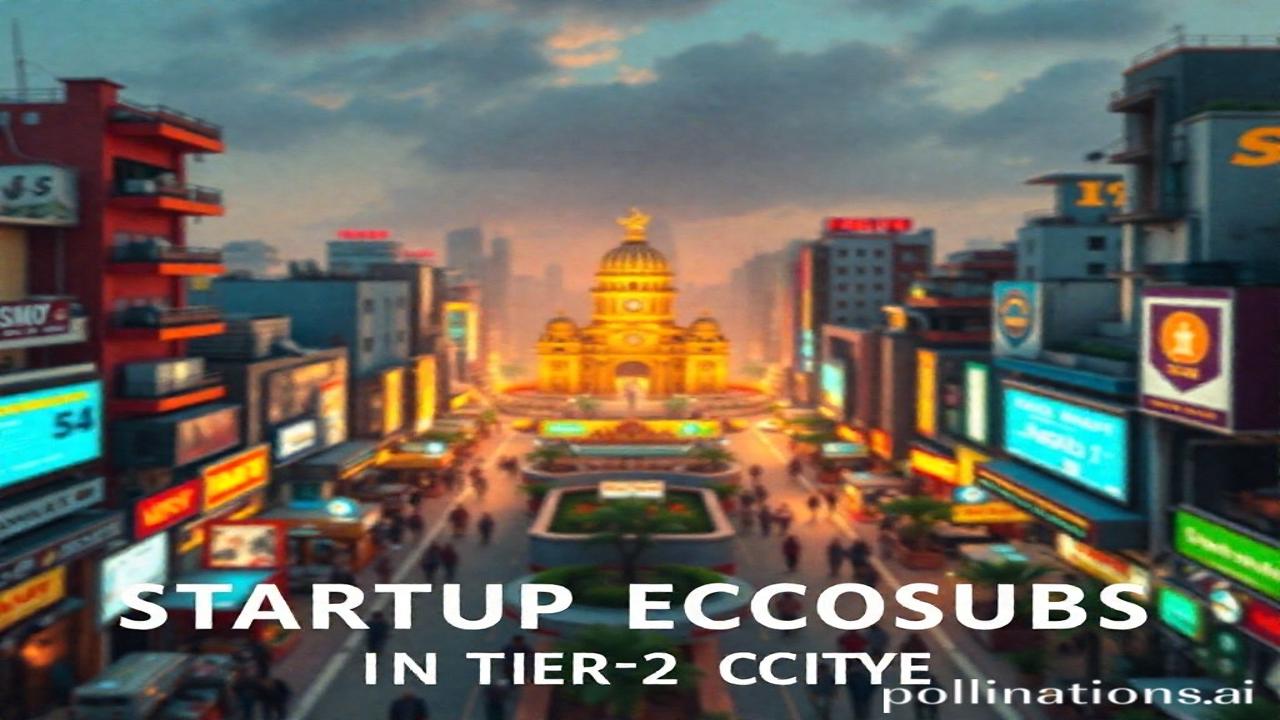Tier-2 Cities: The Quiet Revolution in India’s Startup Ecosystem
Kabhi kabhi lagta hai, jaise hamare desh ki chhoti shehro mein ek dheemi aag sulag rahi hai. It’s a quiet revolution, happening away from the glaring lights of Mumbai and Bangalore. A revolution driven by ambition, ingenuity, and a deep-rooted desire to create something new in their own backyard. Aaiye, explore karte hai yeh naya Bharat, ek startup ecosystem jo Tier-2 cities mein phul raha hai.
What is a Startup Ecosystem, Anyway?
Before we dive deep into the heartland, let’s understand what a startup ecosystem actually is. Simply put, it’s like a jungle for new businesses. It consists of all the resources and support systems that help startups grow and thrive. This includes:
- Funding: Venture capital, angel investors, government schemes
- Talent: Skilled workforce, educational institutions
- Infrastructure: Good connectivity, affordable office spaces
- Mentorship: Experienced entrepreneurs, industry experts
- Government Support: Policies, regulations, and incentives
- A supportive culture: A community that celebrates innovation and risk-taking.
These elements work together to create a fertile ground where new ideas can take root and flourish. Think of it like the ‘shakti’ (शक्ति) needed to nurture a seedling into a strong tree.
A Historical Context: Why Tier-2 Now?
Traditionally, startup activity was concentrated in major metropolitan areas like Bangalore, Mumbai, and Delhi. These cities had a head start in terms of infrastructure, funding, and access to talent. However, things are changing rapidly. Tier-2 cities are catching up, and in some ways, even surpassing the metros in terms of growth potential.
The reasons are manifold:
- Saturation in Metros: The big cities are becoming increasingly expensive and competitive. The cost of living, real estate, and hiring talent is skyrocketing.
- Reverse Migration: Many professionals are returning to their hometowns in Tier-2 cities, bringing with them valuable experience and skills.
- Improved Infrastructure: Government initiatives and private investment have significantly improved infrastructure in Tier-2 cities, including internet connectivity, roads, and power supply.
- Government Support: The government is actively promoting entrepreneurship in Tier-2 cities through various schemes and incentives.
- Lower Cost of Living: Tier-2 cities offer a significantly lower cost of living, allowing startups to operate with leaner budgets.
- Local Needs: Entrepreneurs in Tier-2 cities are often better positioned to understand and address the unique needs of their local communities.
ज़मीनी सच – People and Life in a Tier-2 Startup
Imagine a young woman, Priya, who grew up in Lucknow. After working for a few years in Bangalore, she decided to return to her hometown and start her own e-commerce business specializing in handcrafted artisanal products.
“Bangalore mein, sab kuch bahut fast-paced tha. It was exciting, but also exhausting,” Priya tells me over chai. “Lucknow mein, life slow hai, but it also means people are more connected to their roots and traditions. I wanted to create a business that celebrates that.”
Priya’s startup provides a platform for local artisans to showcase and sell their products online, reaching a wider market than they ever could before. She’s not just building a business; she’s empowering her community and preserving traditional crafts.
Stories like Priya’s are becoming increasingly common in Tier-2 cities. Entrepreneurs are leveraging technology to solve local problems, create jobs, and build thriving businesses.
धरोहर और पहचान – Connecting to Indianness
The rise of startup ecosystems in Tier-2 cities is not just an economic phenomenon; it’s also a cultural one. It’s about rediscovering and celebrating our ‘Bharatiyata’ (भारतीयता) – our Indianness.
These entrepreneurs are often deeply connected to their local culture and heritage. They’re building businesses that reflect the unique values and traditions of their communities. They are infusing their ventures with the spirit of ‘atmanirbharta’ (आत्मनिर्भरता), self-reliance, a core value of Indian society.
This connection to local culture is not just a feel-good factor; it’s also a competitive advantage. These entrepreneurs understand the needs and preferences of their local customers better than anyone else.
मजेदार तथ्य या भ्रम-भंजक – Myth-Buster
Log aksar samajhte hain ki startup sirf IT aur technology se related hota hai. Lekin asli sach yeh hai ki Tier-2 cities mein, startups agriculture, handicrafts, tourism, aur even food processing jaise sectors mein bhi tezi se badh rahe hain. The opportunities are endless.
दृश्य और भावनाएं – Visual and Sensory
Imagine walking through the bustling marketplace of Jaipur. The air is filled with the aroma of spices, the sound of bargaining, and the vibrant colors of textiles. Now imagine that same marketplace connected to the world through a digital platform created by a local startup. That’s the power of the Tier-2 startup revolution.
Think of the vibrant colours of Varanasi silk being showcased online, the intricate carvings of Khajuraho brought to life in a virtual tour, or the flavours of Lucknowi biryani delivered across the country. This is the future, and it is rooted in the present of Tier-2 India.
अंतिम विचार या उद्धरण – Closing Insight
“Uthho, jaago, aur tab tak mat ruko, jab tak lakshya prapt na ho jaye.” – Swami Vivekananda
The spirit of Swami Vivekananda’s words resonates deeply with the entrepreneurs of Tier-2 India. They are rising, awakening, and relentlessly pursuing their dreams. And in doing so, they are shaping the future of our nation.
It’s a journey, a long and challenging one, but filled with immense potential and driven by the unwavering spirit of “kuch kar dikhane ka” – the desire to achieve something meaningful. And this is why Tier-2 cities are not just the future of India’s startup ecosystems; they are the heart of a new India.
